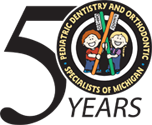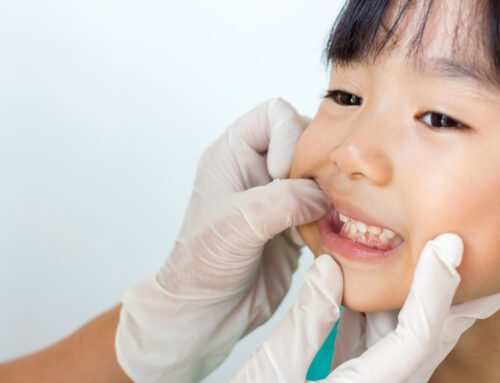Children can communicate that they have a toothache in a variety of ways. For example, your child may avoid eating solid foods, object to tooth brushing, have difficulties sleeping, pull at their ears, or fuss and cry.
Children’s toothaches can be caused by:
- Cavities
- Food lodged in the gums or between the teeth
- A loose tooth with sharp edges
- Cracked teeth
- New teeth “growing in”
It can be tough to pinpoint the source of your child’s toothache since facial nerves often overlap one another and this can cause referred pain. Before you get to our office, there are some things you can do to help ease their discomfort.
Swish With Warm Salt Water
Have your child rinse their mouth with warm salt water. This step works best if your youngster is old enough to spit out the rinse instead of swallow it.
Salt water rinse helps reduce swelling and clean any oral wounds, which is one of the most common causes of tooth pain.
Gentle Brushing and Flossing
Examine your child’s mouth to see what’s going on. If you observe swelling or food lodged around the problem tooth, use a toothbrush to gently wipe it away. Or tie a tiny knot in a strand of floss and run it side to side through a tooth contact that may have food stuck in it to see if you can pull anything out of that space.
Over-the-Counter Pain Relievers
Anti-inflammatories like ibuprofen or Motrin work best for toothaches. This can keep your child comfortable until they receive professional care.
Ice Packs Can Help
Offer your child an ice pack and have them hold it against their cheek. Bags of frozen vegetables are also handy for this.
See Your Child’s Dentist
Even if your child starts to feel better, toothaches almost always come back unless it was a very obvious food impaction in or around the gum tissues. Regardless of when your child’s last checkup took place, don’t wait to schedule an exam if your child experiences a toothache!





